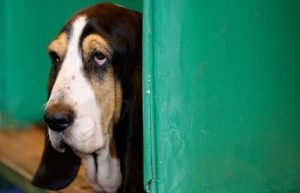
Basset hounds and corgis share same ancestor
An article in the Telegraph stated the study is due to be published in the journal Science where scientists studied DNA from 835 dogs, 95 of which had short legs.
This new scientific discovery gives clues about the basic of evolution and how species have different physical attributes. It is hope it may even lead to new discoveries and understanding of diseases such as cancer and human dwarfism.
Reportedly, in short legged dog breeds, the growth of their limb bones is stunted thanks to the calcification of growth plates, meaning they have a long body and yet short legs with the bow-legged, curved appearance that their dog breeders admire.
This particular trait is not the same as when a dog is simply small naturally, as is the case with a toy poodle, and is known as chrondodysplasia or disproportional dwarfism.
From the study, there were over 40,000 markers studied from the DNA and all the short-legged breeds like the Basset, corgi and daschund had a unique variant in their genes. Unlike the other dog breeds, the short legged breeds have a ‘retrogene’. In their case, it was:
“an extra copy of a gene that controls a growth-promoting protein called fibroblast growth factor 4 (FGF4)”
This retrogene means that the FGF4 protein is over-produced. The scientists believe this might cause particular growth receptors to ‘turn on’ at the wrong time during the development of the foetus.
As mentioned on a BBC documentary last August (see Martin Clunes: A Man and his Dogs), every dog today descended from the same ancestors as domestic dogs were bred from wolves. Using computer analysis, the National Human Genome Reasearch Institute team calculated that all dogs with this particular gene variant can be traced to a mutation in a shared ancestor’s genes.
Lead researcher on the project Dr Elaine Ostrander said:
“Every species, including canine and human, carries an amazing record of evolution scripted genomes that can teach us about the mechanisms at work in biology, as well as about human health and disease.”
Colleague Dr Hedi Parker said: “Our findings suggest retrogenes play a larger role in evolution than has been previously thought, especially as a source of diversity within species. We were surprised to find that just one retrogene inserted at one point during the evolution of a species could yield such a dramatic physical trait has been conserved over time.”

Dachshunds are so cute!